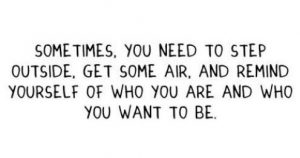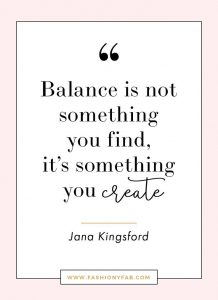20 May 2018 by Lisa Meloncon
It’s been a busy, busy two months since I last posted, but that seems like that statement alone is the perfect way to start a post about balance 🙂
One of the things that #womeninTC advocates for is to try and find balance in our lives. As part of my role within #womeninTC and as part of my own personal beliefs and passions, I have been a vocal advocate for not working so much and taking care of ourselves (e.g., here and here). And the topic of balance is one I’ve written about before.
 But, I get that this idea of balance is a whole lot easier said than done. It’s also made trickier cause it is something of a double bind. We’re having to do balance within balance—balancing the different parts of the job with then trying to balance the job with the rest of our lives.
But, I get that this idea of balance is a whole lot easier said than done. It’s also made trickier cause it is something of a double bind. We’re having to do balance within balance—balancing the different parts of the job with then trying to balance the job with the rest of our lives.
It’s been no secret that this year has been hard for me, and while I struggled to figure out how to deal with several personal struggles and learn a new institutional culture, I thought a lot about this idea of balance. Going back to the love of words, the dictionary tells us that balance has two complementary definitions:
- an even distribution of weight enabling someone or something to remain upright and steady.
- a condition in which different elements are equal or in the correct proportions.
These two definitions get at the two aspects of balance I mention above: balance within the job and then balance of the job with other things. To be reminded that there needs to a distribution for steadiness AND that distribution can lead to finding a life with the correct proportions. The dual balancing acts are not easy, however, and complicating matters even more is that the need to balance and shift is constantly changing.
But it’s not all bleak and impossible. It really isn’t. The first step in performing a good balancing act is to recognize and embrace that it is how and why and what you balance is gonna change and more importantly that some days you may just fall down. Once you have this idea as your foundation then it becomes a little easier to develop strategies for the ways you can actually begin to perform your own balancing acts.
Understand the requirements
I cannot say it enough that you need to start with the requirements of the job you have. Graduate school teaches us a lot of really great things, but it does not do a good job of preparing folks to actually do a job. A big reason for that is our graduate programs are at research universities while the majority of jobs are at teaching universities. That’s a big disconnect. So the first step, and an ongoing step, is to look to the requirements of job and build out from there.
Right now folks are moving or preparing to move to new jobs or they are beginning the process of reflection as summer begins. This is the perfect moment to visit or revisit your institutional documents and policies that will govern your work. These usually take the form of reappointment, promotion, and tenure documents; workload policies; and/or university, college, and department level faculty handbooks. These are one of the first places to go to figure out what is required of you to be judged “successful” at your job. Starting here and then matching those with your own goals and values leads to less stress and more balance than other approaches.
Absolutely, there are often unwritten rules or expectations, but you definitely need to understand what the official ones are first and then work your way out from there. Some are not nearly as explicit and simply talk in vague terms about participating in all three. Your goal is learn what they are, ask explicitly what is expected if they are spelled out, and then chart a path to ensure you meet those requirements.
Match requirements to your own goals and values
At the ATTW luncheon this year , we focused on trying to develop strategies that helped us align institutional priorities or job requirements with our own values. This is a key component of ensuring balance within the job and more so for balance within our lives. Without taking the step to determine your own goals and values and where they overlap (or not) with the institutional requirements, it’s more likely that you’ll just end up overworked and stressed out.
For those of us that like visual things, this is a great reflective exercise to do visually by using lists, charts, venn diagrams, and lots of colored pens. But having recently done this as I’m trying to figure out both my summer and changes I would like to make for the next academic year, the exercise was extremely eye opening in seeing where things do overlap and in coming up with plans on how to make more of my goals and institutional requirements overlap going forward.
Think through possibilities on how to merge teaching, research, and service
I recently sent my tenure narrative to someone who wanted some models as they start to write their own. When I found that document, I was reminded that the last section of it was all about how I merged together teaching, research, and service. I demonstrated that by talking about a series of courses I taught, an ongoing service learning project, and finally the article that came out of it.
Thinking through ways that you can do this with your teaching, research, and service can be beneficial because if you can find ways to merge them or have them overlap in meaningful ways, you can find additional balance within your job and your life. Many people in the field have projects or goals that intersect with communities and publics and activism. With some strategic forethought and planning, many of those projects can be integrated into all aspects of work lives to the benefit of those work lives, but also to the benefit of our own care of the self. Sometimes the biggest differences we can make are the small and local changes in our own communities.
Making the time to think about how this is possible or talking to those who have done it successfully may be the key to your own balancing act. (If you want help in this process, let me know and I’m sure I can find someone that can match your interests, your job type, or has similar goals.)
 Start with your life and family
Start with your life and family
So once you sort of have your job balanced you gotta figure out how to balance that with the rest of your life. In talking to a lot of people lately, the ones that seem to have the balance thing down the best are the ones that start with their lives and then add their jobs. Someone told me just this week how they adjust their work schedule to match the schedule of their partner. That way guilt doesn’t set in and the partner remains happy because that time is for them.
In other words, if you’re planning your week or your term or your summer, they start with putting in all the family and fun things that they are doing. That way family, fun, and/or life time is not squeezed out by the job.
Pick your work strategy
Some folks like to work everyday and to ensure a better balance they simply do not work as much most days. So for example, M-F may be a 5-6 hour work days and then to maintain momentum they work a couple of hours on each weekend day. Others do slight modifications where they do six days and take one totally off a week.
Yet others still do the more traditional approach of working during the week and taking the weekends completely off.
No matter the strategy, it’s good to build up habits and routines to pick one and stick with it. At least stick with the same one through an academic term and shift to another if it’s not working or if you see something on the horizon that may require a different approach.
Have hobbies that are not related to work
In a recent faculty office hours, we talked about self care and one of the biggest takeaways from that discussion was that a big part of self care was to have hobbies and interests and things (however or whatever you define it as) that are not connected to work.
We all understand that there are parts of this job—particularly parts of the research process—where the work is exciting and fun and it doesn’t at all feel like a job. But, it’s still a job. The life of the mind can sometimes trick us into thinking that that is all there is. It’s not. And the faculty on that call that day all agreed that having outside interests was a key to their self care, which is the biggest key to having a more balanced life.
Understand give and take
In a recent discussion with a group of women in my department, it became clear that the balance between work and the rest of lives is a huge priority but a constant struggle. A number of suggestions were made about how to get the balance better.
We all agreed that achieving a good balance means that you have to understand the give and take of academic life. That is, our jobs shift and change from term to term and from year to year and from big project to big project. Sometimes there is a necessity to work more to achieve some of your goals. That’s just part of the job. But to really work toward a balance that means that more rest and relaxation needs to be inserted at some point.
The give and take of work and the rest your life needs attention and being aware that that sometimes the scales tip more to work or more to life is the first step in gaining more control over the balance. Where you drive the decisions rather than feeling as if all control rests with your job.
Balance is not easy, not within the job itself and not with merging work and life. But as you move into summer, I would encourage you to think through what balance means for you and then how to better achieve it. Because balance means we’re upright and steady and things are in good proportion, and that sounds like a pretty good way to live. We have the power to create that balance and so go out and create it!
Wishing you health, peace, joy, and maybe a little more balance.

